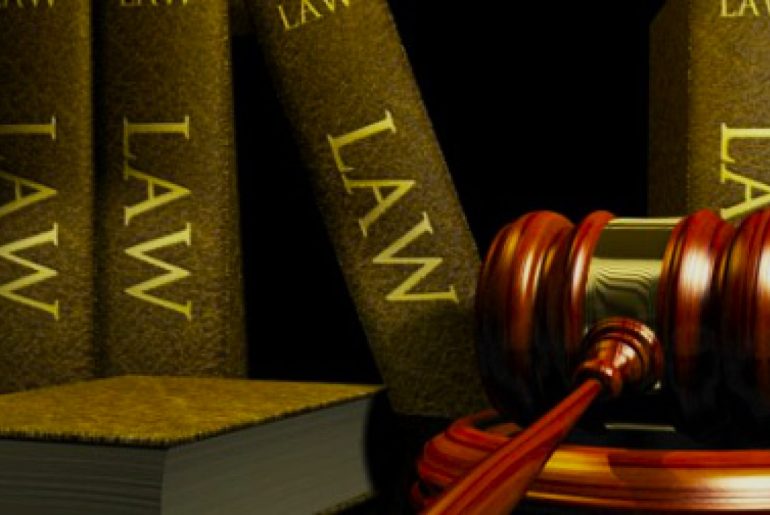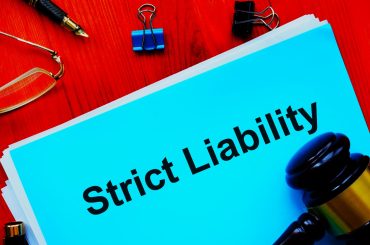It sounds like you have a good understanding of how booking documents (reservation documents) and citations use abbreviations to reference specific sections of California law related to alleged violations. These codes—VC for Vehicle Code, PC for Penal Code, and HS for Health and Safety Code—are indeed crucial for categorizing the nature of the offenses and streamlining the legal and administrative processes following an arrest.
The examples you provided, such as VC 23103 for reckless driving and PC 602 for trespassing, illustrate how specific sections of these codes are used to detail the exact nature of the suspected violations in booking documents. This precision helps ensure clarity and consistency across the legal system, aiding law enforcement, legal professionals, and the accused in understanding the charges being faced.
Your distinction between the booking process and an arraignment is also important. The booking process involves documenting the arrest and the suspected charges, while the arraignment is a subsequent phase where the accused has the opportunity to respond to those charges formally in court. This distinction highlights the procedural steps in the criminal justice system, moving from the initial arrest and booking to the formal court proceedings that follow.
Does “VC” stand for in California booking documents?
Yes, “VC” in California booking documents stands for “Vehicle Code,” which is part of the broader collection of laws governing various aspects of motor vehicle operation, registration, and ownership within the state of California. Similarly, “CVC” refers to the “California Vehicle Code,” another common abbreviation used interchangeably with VC to denote the same set of laws.
The California Vehicle Code (CVC) is a comprehensive compilation that includes statutes addressing a wide range of vehicular matters—from basic road safety rules and speed limits to more specific regulations concerning driving under the influence (DUI) and vehicle registration processes. Laws within the CVC are designed to ensure the safety and regulation of motor vehicle operation on public roads.
A few examples of common laws within the California Vehicle Code include:
- Vehicle Code 22350 VC: This is California’s basic speeding law, which prohibits driving at a speed greater than is reasonable or prudent under the conditions and having regard to the actual and potential hazards then existing. In essence, it requires drivers to adjust their speed to match road conditions, traffic, weather, and visibility.
- Vehicle Code 23152b VC: This section deals with DUI regulations, specifically prohibiting driving with a Blood Alcohol Concentration (BAC) of 0.08% or greater. It’s one of the standard benchmarks for DUI offenses, applying to most drivers operating regular passenger vehicles.
- Vehicle Code 4462 VC: This law pertains to vehicle registration fraud, addressing issues like presenting false evidence of registration, failing to present registration upon request by a law enforcement officer, or forging or falsifying registration documents.
When a booking document lists a law within the Vehicle Code (VC or CVC), it indicates that the individual is suspected of violating that specific statute. This notation helps categorize the nature of the offense and streamlines the legal process by clearly identifying the alleged violation.
What is “PC” stand for in a booking document?
In booking documents, “PC” stands for “Penal Code,” referring to the collection of laws that detail California’s regulations on criminal offenses. This code encompasses a wide range of laws, from those governing minor infractions to serious felonies. “CPC” is another abbreviation used interchangeably with PC, standing for “California Penal Code,” further emphasizing its jurisdiction within the state of California.
The California Penal Code (CPC or PC) is essential for law enforcement, legal professionals, and the judiciary as it provides the legal framework for defining criminal acts, outlining potential punishments, and setting forth the procedures for prosecuting criminal cases. Here are examples of common laws found within the California Penal Code:
- Penal Code 459 PC: This section defines burglary as entering a room, structure, or locked vehicle with the intent to commit grand or petty theft or any felony. It’s a crime that can be charged as a misdemeanor or felony depending on the circumstances.
- Penal Code 261 PC: This law outlines the crime of rape, describing it as an act of sexual intercourse accomplished with a person not the spouse of the perpetrator under specific conditions, including force, threats, or fraud, or with a victim who is incapable of giving legal consent because of mental disorder or developmental or physical disability.
- Penal Code 30605 PC: This statute addresses the possession of assault weapons, categorizing it as a criminal offense to own, purchase, receive, or have in possession any assault weapon, as defined by California law, without specific authorization.
What is “PC” stand?
In state booking documents, “HS” stands for “Health and Safety Code,” which encompasses a wide array of laws pertaining to public health, environmental protection, and drug regulations in California. The abbreviations “HSC” and “CHSC” are also used, standing for “Health and Safety Code” and “California Health and Safety Code,” respectively. This legislative code is critical for addressing issues related to public welfare, including drug-related offenses, which constitute a significant portion of the code’s provisions.
The Health and Safety Code plays a pivotal role in the legal system’s approach to drug regulation and enforcement. It sets forth the laws governing the possession, distribution, and sale of controlled substances, outlining the legal framework for combating drug abuse while aiming to protect public health and safety. Here are examples of common laws within the California Health and Safety Code:
- Health and Safety Code 11357 HS: This law pertains to the possession of marijuana, outlining the legal boundaries for possessing cannabis and cannabis products in California. While the state has legalized marijuana for both medical and recreational use under certain conditions, there remain specific legal limits and regulations regarding possession amounts, cultivation, and use in public spaces.
- Health and Safety Code 11352 HS: This section addresses the sale of a controlled substance, criminalizing the act of selling, transporting, administering, giving away, selling, or offering to sell controlled substances. The law covers a broad range of drugs beyond marijuana, including narcotics and prescription medications not lawfully prescribed.
- Health and Safety Code 11351 HS: This statute focuses on possession for sale of a controlled substance, targeting individuals who possess drugs with the intent to sell them. The law aims to crack down on drug trafficking by penalizing possession with intent to distribute, a serious offense that carries significant legal consequences.

What does “booking” mean?
Booking is a critical initial step in the criminal justice process, following an individual’s citation or arrest by police officers. This procedure is not only administrative but also serves as the formal record of the arrest, capturing essential details that are foundational to the subsequent legal proceedings. Here’s a breakdown of the key components involved in the booking process:
- Summary of Events: The booking report begins with a comprehensive account of the circumstances leading up to the arrest. This narrative is crucial for establishing the context of the incident and providing a factual basis for the legal actions that follow.
- Reference to Laws Violated: The report identifies specific laws that the individual is suspected of violating. This might include references to statutes from the Vehicle Code (VC), Penal Code (PC), Health and Safety Code (HS), or other relevant legislative codes depending on the nature of the alleged offense. These references are critical for delineating the legal grounds for the arrest and potential charges.
- Personal Details of the Suspect: Booking also involves recording the suspect’s personal information, such as name, date of birth, physical description, and any other identifiers. This information helps in accurately identifying the individual within the legal system and can be important for future proceedings, including court appearances and background checks.
- Witness Information: If there are witnesses to the event leading to the arrest, their names and possibly their accounts are included in the booking report. Witness statements can be pivotal in both the investigation and prosecution phases, providing corroborative evidence or offering alternative perspectives on the incident.
Once the booking report is complete, it serves as a foundational document for the legal process. The district attorney or prosecutor reviews the report to make critical decisions, including whether to file charges and, if so, what specific charges to file. This determination is influenced by the details of the booking report, the severity of the alleged offense, and applicable legal standards.
Is “booking” the same thing as an arraignment?
Booking and arraignment are indeed distinct stages in the criminal justice process, each serving a specific purpose and occurring at different times in the course of handling a criminal case.
Booking
Booking is the initial procedure following an arrest, where the arrestee’s details are entered into the police system. This process includes recording the individual’s personal information, the alleged offense, and any relevant details of the arrest. It is largely administrative and serves as the official record of the arrest, but it does not involve formal charges or decisions on the legal proceedings to follow. Booking is the foundation upon which the subsequent legal process is built, providing essential information for the next steps.
Arraignment
Arraignment, on the other hand, is a formal court proceeding and marks the beginning of the judicial process in a criminal case. This is the stage where the defendant is officially presented with the charges filed against them and is given the opportunity to enter a plea. The key aspects of an arraignment include:
- Advisement of Rights: The judge informs the defendant of their Constitutional rights, including the right to an attorney, the right against self-incrimination, and the right to a speedy trial.
- Presentation of Charges: The defendant learns about the specific charges brought against them by the prosecution.
- Entering a Plea: The defendant responds to the charges by entering a plea of guilty, not guilty, or no contest (nolo contendere).
- Bail Considerations: The court addresses the matter of bail, deciding whether to set, modify, reinstate, or exonerate it.
Arraignments are critical because they ensure that defendants are aware of their rights and the nature of the accusations against them, allowing them to make informed decisions about their defense. The timing of the arraignment is carefully regulated to protect these rights, with specific deadlines in place to guarantee a defendant’s right to a speedy trial.
Constitutional Protections
Both the U.S. and California Constitutions provide protections for defendants at the arraignment stage, underscoring the importance of this hearing in the fair administration of justice. These protections ensure that defendants have access to legal representation, can challenge the evidence against them, and are tried within a reasonable time frame. For infractions, certain rights, such as the right to a court-appointed attorney or a jury trial, may not apply, reflecting the lesser severity of these offenses compared to misdemeanors or felonies.




